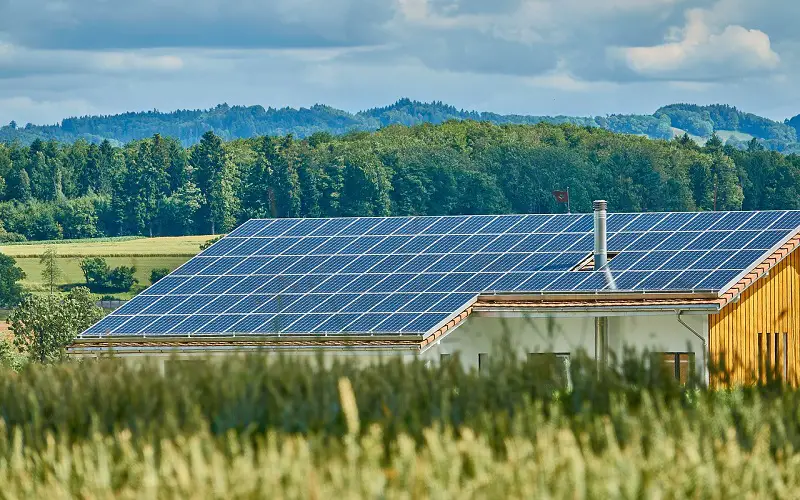Since crypto assets entered mainstream financial discourse, an ongoing debate has raged regarding the substantial power and energy consumption associated with crypto transactions.
Various statistics and anecdotes have been deployed to illustrate the magnitude of this issue. There’s the fact that Bitcoin’s energy usage surpasses that of entire nations and that Bitcoin mining strains specific power grids.
It is indisputable that crypto mining consumes significant power and energy. As such, there have been initiatives to move towards renewable energy. Is there progress in the pursuit of renewable bitcoin mining? Undoubtedly, yes!
Despite the regulatory turbulence, reasonable headway has been achieved. Has Bitcoin transitioned to an entirely eco-conscious state? Regrettably, no, but there has been a noticeable reduction in Bitcoin’s greenhouse gas emissions compared to its previous levels.
Need to learn more about Bitcoin? Read this guide on Bitcoin.
Use of Renewable Energy for Mining
Delivering adequate energy at the lowest cost is the most critical factor for a Bitcoin mining center vs. a physical location. Due to a lack of statistics, determining the fraction of mining that uses fossil fuels vs. renewable energy is challenging today. Nonetheless, miners will increasingly pursue renewable energy rather than fossil fuels long-term.
The study also implies that, in the long term, it may be more advantageous for miners to pick places where renewable energy is produced despite the marginal cost of renewable energy being lower than that of fossil fuel-generated power.
The cryptocurrency mining sector provides one of the first methods for rewarding players for utilizing energy effectively. The idea is that as competition intensifies, there will be greater incentives for investing in renewable energy sources to lower the marginal costs of mining.
This, in turn, will lead to the development of innovative proof-of-work mining systems that enhance the efficiency and allocation of our global energy resources.
The energy consumption of Bitcoin mining has been a topic of vigorous debate. Nevertheless, recent data indicates that renewable energy sources contributed to 56% of the energy supply for global Bitcoin mining.
Bitcoin Mining and Solar Energy
Solar energy is now heralded as “the most cost-effective energy source,” with onshore wind and solar outperforming other energy sources according to levelized cost of energy metrics.
With its rapid growth rate, solar power currently provides approximately 3% of the world’s electricity, offering noiseless operation and exceptional scalability. Unlike the relatively limited availability of geothermal energy, solar energy holds global potential.
Entrepreneurs are increasingly embracing the combination of solar power and Bitcoin mining. Last year, a newly established bitcoin mining company, Aspen Creek Digital Corp., initiated operations at a 6-megawatt (MW) solar-powered facility in western Colorado amid a bear market.
Bitcoin Mining and Wind Energy
Wind turbines boast a 25-year service life, offering more favorable returns for Bitcoin mining than solar power when considering maintenance factors. However, it’s essential to remember that location is vital in harnessing wind energy, influenced by air density, wind speed, and the swept area.
Constrained by the Betz Limit, engineers have been exploring various design possibilities to optimize wind turbine efficiency while reducing costs. While horizontal axis turbines are the conventional choice, there is growing interest in bladeless turbine concepts, although they still need to be significant contenders.
Wind power designs are continually advancing, enhancing efficiency and capacity. The increased adoption of wind-powered mining systems can contribute to a more diverse and sustainable energy mix for Bitcoin mining.
However, like solar power, wind power faces the challenge of intermittency and will require energy storage solutions for periods of low wind activity. Moreover, its scalability is best achieved by integrating energy into the grid through a distributed model.
Bitcoin Mining and Hydropower
Hydropower boasts the highest energy extraction (conversion) efficiency, reaching an impressive 90%, surpassing all other renewable energy alternatives, making it the most dependable option while maintaining the smallest carbon footprint.
Alps Blockchain, an Italian startup, stands out as a company that has harnessed the power of hydropower for Bitcoin mining in Borgo d’Anaunia. Capitalizing on an energy firm’s struggles to cover its facility maintenance expenses, Alps Blockchain acquired more than 40 cutting-edge ASIC miners at a reduced cost and distributed the computing power globally.
Hydropower remains stable and cost-effective, becoming one of the earliest and most widely adopted energy sources. It accounts for a substantial 18% of global power generation and is the most reliable mining choice, eliminating the need for backup systems.
It’s important to note, however, that there exists a degree of skepticism among engineers and scientists regarding hydropower’s classification as renewable, given its environmental impact.
A hybrid renewable energy system has demonstrated heightened efficiency in electricity generation, pointing toward increased profitability in mining operations. Under ideal geographic conditions, the solar-wind hybrid system is a sustainable solution.
The collective influence of technological progress, government incentives, and the adoption of hybrid renewable systems has the potential to accelerate the shift towards green energy at an astonishing pace.
Employing energy balance strategies, curtailing excess power, and expanding energy storage capacity will effectively address efficiency concerns, bolster initiatives to combat climate change, and clear the path for enhanced profitability in bitcoin mining.

